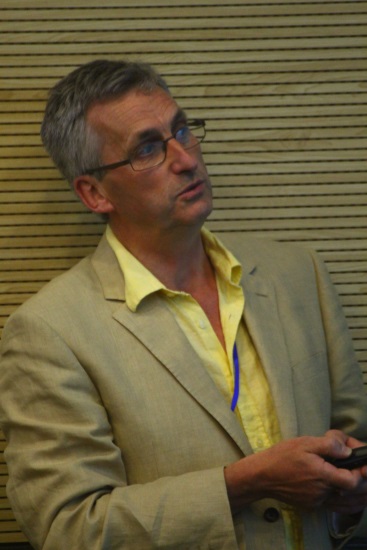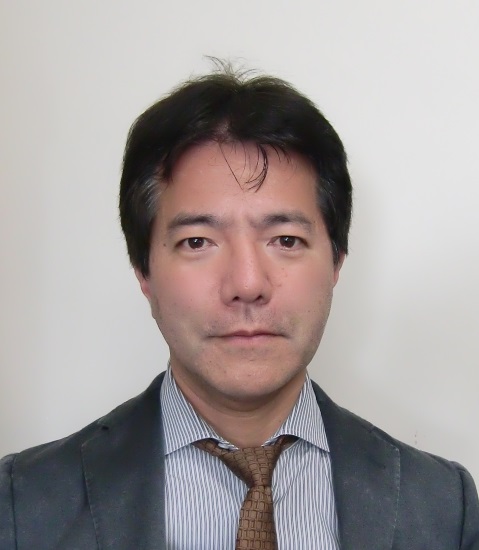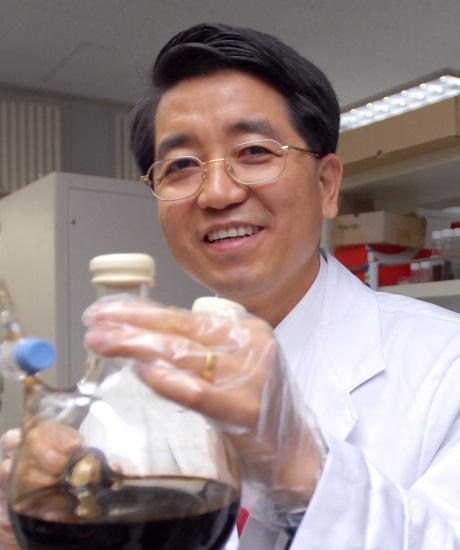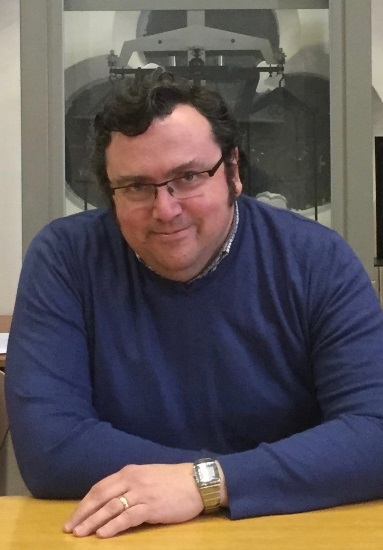Links to external sources may no longer work as intended. The content may not represent the latest thinking in this area or the Society’s current position on the topic.
Challenges for chemistry in molecular imaging

Scientific discussion meeting organised by Professor David Parker FRS, Professor Nicholas Long and Professor Stephen Faulkner.
After more than a quarter of a century of development, molecular imaging is on the cusp of achieving real breakthroughs in directly imaging metabolic change. This meeting will explore the current state of the art, and the scope for development of chemical probes across a broad range of imaging modalities, focusing on defining the chemical challenges and opportunities in the field.
The schedule of talks and speaker biographies are available below. Speaker abstracts will be available closer to the meeting date. Recorded audio of the presentations will be available on this page shortly. Meeting papers will be published in a future issue of Philosophical Transactions A.
Please contact the Scientific Programmes team should you have any enquiries.
Related meeting
Please be aware that there is a related meeting titled Molecular imaging and chemistry: defining the future, which will be taking place at Chicheley Hall on 22-23 March 2017.
Organisers
Schedule
Chair

Professor David Parker FRS

Professor David Parker FRS
David Parker grew up in the North-East of England and graduated from Oxford in 1978. After a D.Phil. with John M Brown in October 1980 he held a NATO fellowship with Jean-Marie Lehn (Strasbourg). He returned to Durham in January 1982 to a Lectureship in Chemistry and was promoted to a Chair in 1992. He has received several national and international awards, including the inaugural IBC Award for Supramolecular Science and Technology in 2000, a Tilden Silver Medal in 2003, the Ludwig Mond Medal in 2011 and the triennial Lecoq de Boisbaudran award for rare earth science in 2012. In 2002, he was elected a Fellow of the Royal Society , and in 2014 was recognized as a RISE Fellow by EPSRC. He has twice served as Chairman of Durham Chemistry.
| 09:30 - 10:00 |
PET in cancer imaging
Over the past few decades, there have been major advances towards radiometal-labeled PET tracers, particularly agents labelled with Ga-68 (T1/2 = 68 min), Cu-64 (T1/2 = 12.7 h) and Zr-89 (T1/2 = 3.3 d). Our lab developed 68Ga- and 64Cu-labeled LLP2A, a peptidomimetic with picomolar affinity for very late antigen 4 (also called integrin 41), which is involved in tumour and immune cell adhesion and migration. We have found optimal chelator conjugates of LLP2A for Ga-68 and Cu-64, which are being applied to PET imaging of metastatic melanoma and monitoring the response to targeted radiotherapy with beta emitting Lu-177-labeled LLP2A in mouse models. We are also investigating imaging in mouse models post-treatment with radiation and immunotherapy. There is considerable effort by many groups towards developing PET tracers to image the programmed death (PD)-1/programmed death ligand 1 (PD-L1) interaction between tumor/myeloid cells and T-cells. Blockade of PD-1/PD-L1 is clinically effective, and is now being tested in combination with radiation therapy (RT). PD-L1 upregulation during RT may serve as a predictive biomarker, but monitoring expression by immunohistochemistry is limited by tissue-sampling artifact. Non-invasive PET imaging of PD-L1 expression would provide real-time information of PD-L1 levels in the tumor and its microenvironment. We have labeled an anti-mouse PD-L1 antibody with Zr-89 for PET imaging in two mouse models (melanoma and head and neck cancer) after treatment with RT and anti-PD-1 mAb therapy. PET imaging data, with confirmation by flow cytometry, show that RT upregulates PD-L1 expression, primarily in myeloid cells in the tumour microenvironment. 
Professor Carolyn Anderson, University of Pittsburgh Bridgeside

Professor Carolyn Anderson, University of Pittsburgh BridgesideCarolyn J. Anderson, Ph.D. is a Professor of Medicine and is the Director of the Nuclear Molecular Imaging and Therapy Laboratory at the University of Pittsburgh (Pitt) and Co-Director of the In Vivo Imaging Facility at University of Pittsburgh Cancer Institute. Her research interests include development of novel radiometal tracers for diagnostic imaging and targeted radiotherapy of cancer and other diseases. Dr. Anderson pioneered the development of radiometal-labeled receptor-targeted PET imaging agents, leading the first human study of a 64Cu-labeled somatostatin analog in patients with neuroendocrine tumors. A current focus of her research lab is in the development of imaging agents for upregulated receptors on immune cells that are involved in inflammation related to lung diseases including tuberculosis, primary tumor growth and cancer metastasis. She has co-authored over 160 peer-reviewed and invited publications, mostly in the area of developing radiopharmaceuticals for oncological imaging and therapy. |
|
|---|---|---|
| 10:15 - 10:45 |
Challenges in development of chemical probes in vivo fluorescence and magnetic resonance imaging
One of the great challenges in the post-genome era is to clarify the biological significance of intracellular molecules directly in living cells. If we can visualize a molecule in action, it is possible to acquire biological information, which is unavailable if we deal with cell homogenates. One possible approach is to design and synthesize chemical probes that can convert biological information to chemical output. In this talk, molecular design strategies for MR and fluorescence imaging probes are introduced. MRI (Magnetic Resonance Imaging) is an imaging technique using nuclear magnetic resonance phenomenon. MRI has been clinically used since it yields highly spatial resolution images of deep regions in living animal bodies. 19F MRI is suitable for monitoring particular signals concerning biological phenomena because 19F MRI shows little endogenous background signals. We have also developed the 19F MRI probes to detect protease activity and gene expression on the basis of paramagnetic resonance enhancement (PRE) effect. However, 19F MRI probes have faced two challenges. First, 19F MRI has the low sensitivity. Second, the suppression of molecular mobility induced by the increase in molecular size shortens the transverse relaxation time (T2), which is a crucial factor affecting the MRI contrast, resulting in attenuation of the MRI signals. To solve these challenges, we developed a novel 19F MRI contrast agent, fluorine accumulated silica nanoparticle for MRI contrast enhancement (FLAME), which is composed of a perfluorocarbon core and a robust silica shell. FLAME has advantages such as high sensitivity, stability, modification of the surface, and biocompatibility. The activatable derivative of FLAME will also be introduced Intravital imaging by two-photon excitation microscopy (TPEM) has been widely utilized to visualize cell functions. However, small molecular probes (SMPs) commonly used for cell imaging cannot be simply applied to intravital imaging because of the challenge of delivering them into target tissues, as well as their undesirable physicochemical properties for TPEM imaging. Here, we designed and developed a functional SMP with an active-targeting moiety, higher photostability, and fluorescence switch, and imaged target cell activity by injecting the SMP into living animals. The SMPs are based on BODIPY structure which is optimized for photostability and for fluorescence wavelenghth overlap for multicolor imaging. The combination of the rationally designed SMP with a fluorescent protein as a reporter of cell localization enabled quantitation of osteoclast activity and time-lapse imaging of its in vivo function associated with changes in cell deformation and membrane fluctuations. 
Professor Kazuya Kikuchi, Osaka University

Professor Kazuya Kikuchi, Osaka UniversityProfessor Kazuya Kikuchi graduated from the University of Tokyo (Japan) for both bachelor and PhD degree. Then, he did his postdoctoral training at UCSD with Prof Roger Y. Tsien and the Scripps Research Institute with Prof Donald Hilvert. He was appointed as a research associate at the University of Tokyo (Japan) thereafter and promoted to associate professor. He was appointed as a full professor at Osaka University in 2005. During this period he became involved in molecular imaging probes development for both fluorescence imaging and magnetic resonance imaging. He is focused both in in vivo imaging and single molecule cellular imaging. |
|
| 11:20 - 11:50 |
Challenges in magnetic resonance imaging
The possibility of carrying out Functional and Molecular Imaging protocols by means of MRI is very attractive for the superb anatomical resolution that is attainable by this technique. However, MRI suffers from an intrinsic insensitivity (with respect to the competing imaging modalities) that has to be overcome by designing suitable amplification procedures involving the use of properly designed chemicals. This approach relies first on the development of paramagnetic contrast agents endowed with an enhanced sensitivity and on the identification of efficient routes of accumulation of the imaging probes at the sites of interest. In this context much attention has been devoted to the design and use of self-assembled systems based on amphiphilic molecules as well on the use of whole cells, where the imaging reporters are represented by highly stable paramagnetic Gd(III) complexes Besides relaxation agents much attention is currently devoted also to the use of CEST agents (CEST= Chemical Exchange Saturation Transfer). Upon applying a second rf field at the absorption frequency of an exchangeable protons pool, a net saturation effect is detected on the water signal. These are frequency encoding systems that allow multiple agents detection in the same anatomical region as well as they offer the possibility of designing innovative responsive probes that report on specific parameters of the microenvironment in which they distribute. To overcome sensitivity issues, also for this class of agents, the use of Liposomes (LipoCEST) and RBCs (ErythroCEST) appear to offer valuable solutions. Finally the access to hyperpolarized molecules has opened new horizons providing the possibility of investigating in vivo metabolic processes. It will be shown how hyperpolarization of molecules like pyruvate and lactate can be attained by procedures base on the use of para-Hydrogen and magnetic field cycling. 
Professor Silvio Aime, University of Turnin

Professor Silvio Aime, University of TurninSilvio Aime is Professor of General and Inorganic Chemistry at the Department of Molecular Biotechnologies and Health Sciences and Head of the Center of Excellence on Molecular Imaging of the University of Torino. His main research activities deal with the development of Imaging Probes for MR-Molecular Imaging applications (paramagnetic complexes, nanoparticles, CEST agents, targeting and responsive probes, hyperpolarized Para-Hydrogen containing molecules). In the last decade his research interests have included the design and testing of imaging probes for other imaging modalities (nuclear, optical and photoacoustic imaging). Recent awards: 2013: World Molecular Imaging Society Gold Medal Award; 2013: Fischer Award for Contrast Media Research; 2014: Gold Medal “Amedeo Avogadro” from the Italian Chemical Society. |
|
| 12:05 - 12:35 |
Challenges in radiolabelling methodologies
The success of Positron Emission Tomography (PET) and renewed interest in [18F]radiochemistry led to creative methods to incorporate 18F into molecules of increasing complexity. Despite these advances, clinically useful radiotracers lie within a narrow accessible space with [18F]fluoroalkanes and [18F]fluoroarenes at the forefront. Many potentially high value PET 18F-labeled tracers and drugs lie outside this radiochemical space, and the ability to test tracers not amenable to traditional or newly developed 18F-labeling intervention would be a major boost for PET imaging. A more diverse range of 18F-tags could immediately serve medicinal chemists by informing the selection of lead compounds much earlier in the drug discovery pipeline. This lecture will present our general approach to late stage 18F-fluorination and the recent contribution we have made to this field of research with the labeling of a range of high value 18F-tags for PET. 
Professor Veronique Gouverneur, University of Oxford

Professor Veronique Gouverneur, University of OxfordVéronique Gouverneur received her PhD in chemistry at the UCL (Belgium) with Prof. L. Ghosez. She moved to a postdoctoral position at the Scripps Research Institute (USA) with Prof. R. A. Lerner, then returned to Europe with a position at the University Louis Pasteur (France). Her independent research career started at the University of Oxford in 1998 and she became Professor in 2008. She also holds a tutorial fellowship at Merton College Oxford where she teaches organic chemistry. Her research aims at developing new approaches to address long-standing problems in the synthesis of fluorinated molecules including pharmaceutical drugs and [18F]labeled probes for PET imaging. Her research published in > 160 peer-reviewed publications and presented at > 120 international conferences was recognized by numerous awards. She is currently holding a Royal Society Wolfson Research Merit Award, the Tetrahedron Chair 2016, and is the recipient of the RSC Tilden Prize 2016. |
Chair

Professor Sajinder Luthra, GE Healthcare Life Sciences

Professor Sajinder Luthra, GE Healthcare Life Sciences
Sajinder is an internationally recognised radiochemist in the molecular imaging field and is head of development and translational sciences at GE Healthcare Life Science. The group she currently manages is involved in the development of molecular imaging (PET and SPECT) and contrast media agents (MR, X-ray and Ultrasound). She started her career at the MRC Cyclotron Unit at Hammersmith Hospital, UK and she moved to industry in 2001.
Sajinder’s expertise spans from early discovery through to development, including regulatory approval of diagnostic imaging agents. She has strong links with academia and pharma, participates in scientific advisory boards and is a member of various scientific committees. She is the recipient of GEHC 2013 Edison award.
| 13:45 - 14:15 |
Challenges for probe translation to the clinic
There are thousands of “molecular imaging” papers published each year, but the number of new molecular probes approved for clinical use in the last decade can be counted on one hand. There are a number of barriers, both economic and technical, to overcome to achieve clinical adoption of a new probe. There are shared development challenges among MR, PET, SPECT, and optical probes, as well as challenges that are unique to the molecule and imaging modality. Drawing on examples from the MR and nuclear imaging fields, I will discuss various barriers facing probe development and translation: 1) unmet medical need and willingness to pay; 2) preclinical efficacy, study design, bias, and reproducibility; 3) safety and efficacy; 4) clinical trial risk and imperfect truth standards; 5) regulatory risk; 6) market factors - size, competition, reimbursement. 
Professor Peter Caravan, Massachusetts General Hospital and Harvard Medical School

Professor Peter Caravan, Massachusetts General Hospital and Harvard Medical SchoolPeter Caravan is the Director of the Institute for Innovation in Imaging (I3) at Massachusetts General Hospital (MGH) and Associate Professor of Radiology at Harvard Medical School (HMS). He received his Ph.D. in Chemistry from the University of British Columbia. Dr. Caravan’s broad interests are in the development of novel molecular probes for use in positron emission tomography (PET) and magnetic resonance (MR) imaging, application to disease detection, staging and treatment monitoring, and ultimate translation to clinical practice. Prior to joining MGH/HMS in 2007, he worked in industry developing targeted MR probes such as MS-325 (gadofosveset, FDA approved) and EP-2104R, the first molecular MR imaging probe to enter human clinical trials. At MGH/HMS he invented and translated the PET probe 64Cu-FBP8 currently in human clinical trials for detection of thrombosis (blood clots). |
|
|---|---|---|
| 15:00 - 15:30 |
Challenges for nanoparticle research in molecular imaging
Over the last 18 years, our laboratory has focused on the designed chemical synthesis, assembly and applications of uniform-sized nanocrystals. In particular, we developed a novel generalized procedure called as the “heat-up process” for the direct synthesis of uniform-sized nanocrystals of many metals, oxides, and chalcogenides. For the last 10 years, our group has been focused on medical applications of various uniform-sized nanoparticles. Using 3 nm-sized iron oxide nanoparticles, non-toxic T1 MRI contrast agent was realized for high resolution MRI of blood vessels down to 0.2 mm. Very recently, we report on the biocompatibility evaluation and MR imaging of extremely small and uniform-sized iron oxide nanoparticles in large animal models including most clinically-relevant non-human primates. These biocompatible iron oxide nanoparticles are successfully used as T1 MR contrast agent for high-resolution MR angiography of macaque monkeys. Furthermore, dynamic MR imaging enabled the detection of cerebral ischemia in beagle dogs and monkeys. These current pilot studies on nonhuman primates clearly demonstrate great promise for these iron oxide nanoclusters as a strong potential candidate for next-generation MR contrast agent. We report the first successful practical application of biocompatible TaOx/SiO2 core/shell nanoparticles (TSNs) as a hemostatic adhesive for minimally invasive procedures as well as an immobilized marker for image-guided procedures. TSNs are highly biocompatible as evidenced by little cytotoxicity and less inflammation reaction than the synthetic polymer adhesive mixture, CA-Lp. We also demonstrate that TSNs can work as a tissue adhesive with the assistance of multimodal imaging in a liver puncture model to stop internal bleeding. Moreover, owing to their adhesive property and multimodal imaging capability, TSNs were utilized as an injectable immobilized anatomical marker to aid image-guided surgery. We reported the first successful demonstration of high-resolution in vivo three-photon imaging using ultra-bright Mn2+ doped ZnS nanocrystals. The large three-photon cross-section of the nanocrystals enabled targeted cellular imaging under high spatial resolution, approaching the theoretical limit of three-photon excitation. Owing to the enhanced Stokes shift achieved through nanocrystal doping, the three-photon process was successfully applied to high-resolution in vivo tumor-targeted imaging. 
Professor Taeghwan Hyeon, Institute for Basic Science and Journal of the American Chemical Society

Professor Taeghwan Hyeon, Institute for Basic Science and Journal of the American Chemical SocietyTaeghwan Hyeon received his B. S. (1987) and M. S. (1989) in Chemistry from Seoul National University (SNU), and Ph.D. in Chemistry from U. Illinois (1996). Since he joined the faculty of Chemical and Biological Engineering of SNU in 1997, he has been focused on the synthesis and applications of uniform-sized nanoparticles and nanoporous materials, and published > 270 papers in prominent international journals. In 2011, he was selected as “Top 100 Chemists” by UNESCO&IUPAC. Since 2012, he has been serving as a Director of Center for Nanoparticle Research of Institute for Basic Science (IBS). He is Fellow of Royal Society of Chemistry (RSC) and Materials Research Society (MRS). He received many awards including 2012 Samsung Hoam Prize, POSCO-T. J. Park Award (2008), Presidential Young Scientist Award (2002), and DuPont Sci&Tech Award (2005). Since 2010, he has served as an Associate Editor of J. Am. Chem. Soc. He has been serving as editorial (advisory) board members of ACS Central Science, Advanced Materials, Nanoscale, Nano Today, and Small. |
|
| 16:15 - 16:45 |
The status and future of molecular imaging
Molecular imaging (MI), as its name implies, is a field that lies squarely at the intersection of molecular biology and traditional medical imaging. Molecular imaging originated from the need to better understand the fundamental molecular pathways inside organisms in a non-invasive manner. Over the past two decades, two factors have acted in concert to fuel the ascent of molecular imaging in both the laboratory and the clinic: an increased understanding of the molecular mechanisms of disease and the continued development of in vivo imaging technologies, ranging from improved detectors to novel labelling methodologies. The advent of molecular imaging has, in turn, prompted a paradigm shift in medical imaging as a whole, from its foundations in purely anatomical imaging towards techniques aimed at probing tissue phenotype and function. Taking cancer as an example, both the cellular expression of disease biomarkers and fluctuations in tissue metabolism and microenvironment have emerged as extremely promising targets for imaging. Indeed, the field has produced effective molecularly-targeted agents applied with a wide variety of imaging modalities, from fluorescence and luminescence to magnetic resonance. Molecular imaging also contributes to improving the treatment of disease by optimizing the pre-clinical and clinical tests of new medications. 
Professor Jason Lewis, Memorial Sloan Kettering Cancer Center

Professor Jason Lewis, Memorial Sloan Kettering Cancer CenterProfessor Jason S. Lewis is the Emily Tow Jackson Chair at Memorial Sloan Kettering Cancer Center (MSKCC) and is the Vice Chair for Research and the Chief of the Radiochemistry & Imaging Sciences Service in MSKCC’s Department of Radiology. He is the Director of MSKCC’s Radiochemistry and Molecular Imaging Probe Core Facility and is Director of the Center for Molecular Imaging & Nanotechnology. He is a Laboratory Head in the Sloan-Kettering Institute’s Molecular Pharmacology Program, and a Professor at the Gerstner Sloan-Kettering Graduate School of Biomedical Sciences and at Weill-Cornell Medical College. His postdoctoral work was with Professors Carolyn J. Anderson and Michael J. Welch at the Washington University School of Medicine (WUSM). Subsequently he joined the WUSM faculty as an Assistant Professor at the Mallinckrodt Institute of Radiology (2003-2008). In 2008 he joined MSKCC. He has published over 130 papers, books, book chapters, and reviews in the field of molecular imaging. |


